 Image search results - "ryuo-cho" Image search results - "ryuo-cho" |

Road to Mt. Yukinoyama, an ancient mountain and home to over 200 tumuli built during the 5th to 7th centuries. In 2013, it was designated as a National Historic Site.
|
|

Approaching Kawamori. 川守
|
|

Kawamori bus stop, nearest to Mt. Yukinoyama.
|
|

To Mt. Yukinoyama
|
|
|
|
|

Mt. Yukinoyama and Hino River 雪野山と日野川
|
|

Mt. Yukinoyama and Hino River 雪野山と日野川
|
|

Hino River 日野川
|
|

Hino River 日野川
|
|
|

Mt. Yukinoyama and Ryuoji Temple. MAP
|
|

Ryuoji Temple 龍王寺
|
|

Ryuoji Temple 龍王寺
|
|

Ryuoji Temple belongs to the Tendai Sect. 龍王寺
|
|

Ryuoji Temple 龍王寺
|
|

Tenjin Shrine 天神社
|
|

Tenjin Shrine, reconstructing the shrine. Ryuo-cho, Shiga. 天神社
|
|

Hiking trail on Mt. Yukinoyama.
|
|

Mountain God Memorial 山の神
|
|

Trail flanked by ferns
|
|

Ferns
|
|

1st lookout point, too many trees in the way.
|
|

View from Yukinoyama
|
|

View of Ryuo-cho town from Mt. Yukinoyama.
|
|

Map of hiking trails on Yukinoyama. It takes about 90-120 min. to go up and down the mountain. There are some fine views from the trails.
|
|

2nd lookout point 第二展望台
|
|

Top of Yukinoyama at 308 meters elevation. The views are obstructed by many trees. 雪野山 頂上
|
|

Top of Yukinoyama. 雪野山 頂上
|
|

View from top of Yukinoyama
|
|

View from top of Yukinoyama
|
|

View from top of Yukinoyama
|
|

View from top of Yukinoyama
|
|
|
|

This trail was much more scenic.
|
|

Ryuo-cho town as seen from Yukinoyama
|
|
|

Looking toward Higashi-Omi.
|
|

Water barrels in case of fire.
|
|

Trail going down the middle of the mountain.
|
|

View of central Ryuo-cho town from Mt. Yukinoyama.
|
|
|

Ferns
|
|

Ferns all over
|
|
|
|

Lookout point
|
|
|
|
|
|

Sky over Ryuo-cho town
|
|

Entrance to an ancient tumulus (No entry)
|
|
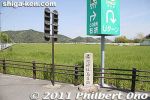
Marker showing the former location of Namura Shrine's torii gate. This is near the Ayato Kita (綾戸北) bus stop, the nearest to Namura Shrine from Omi-Hachiman Station. Take the bus going Mitsui Outlet Mall.
|
|
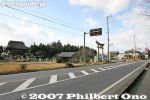
Busy road in front of Namura Jinja Shrine.
|
|
|
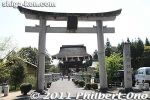
Namura Shrine Torii
|
|
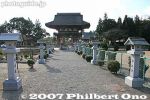
Path to Namura Shrine's Romon gate. Shrine's address: 滋賀県蒲生郡竜王町大字綾戸467 MAP
|
|
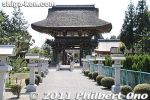
Thatched-roof gate 茅葺きの楼門
|
|
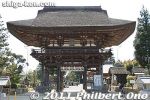
Namura Shrine's Romon Gate, Important Cultural Property 楼門
|
|
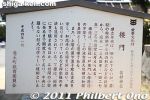
About Namura Shrine's Romon Gate.
|
|
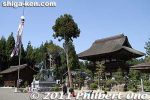
The exact year when the shrine was established is unknown, but records go back as far as the year 969.
|
|
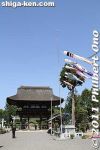
On May 5, Children's Day, koinobori carp streamers were raised.
|
|
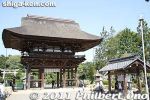
Romon Gate and wash basin.
|
|
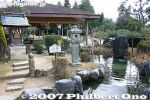
Little shrine and little garden near the Romon Gate.
|
|
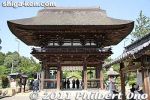
Namura Shrine's Romon Gate, Ryuo, Shiga. Important Cultural Property.
|
|
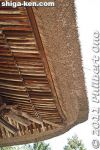
Thatch roof of Romon Gate.
|
|
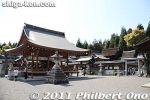
Namura Shrine is divided into the west and east areas. This is the west area which is larger and the main section. Haiden Hall on the left and Nishi Honden on the right behind a wall.
|
|
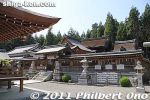
Namura Jinja Shrine is noted for its Nishi Honden hall which is a National Treasure. The shrine's architecture is from the Kamakura Period. 楼門
|
|
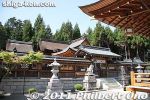
People pray at Namura Shrine for business prosperity, fertility, safe childbirth, and to ward off bad luck years.
|
|
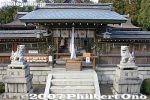
Pray here in front of the Honden Hall. Normally, you cannot enter beyond this point.
|
|
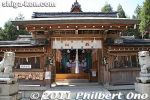
On May 5, on the Sekku Matsuri, they opened the inner part of the shrine and so I went and got a closeup look at the Honden Hall.
|
|
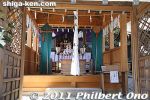
Honden Hall offerings.
|
|

In the center is Namura Shrine's Nishi Honden hall, a National Treasure. On the left is Hachiman Shrine, an Important Cultural Property. I could finally see this building directly. Ryuo, Shiga.
|
|
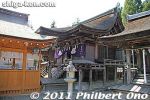
Namura Shrine's Nishi Honden hall, a National Treasure. It is dedicated to a god named Kuni-no-sazuchi-no-Mikoto (国狭槌命), the protector of grassy hills.
|
|

About Nishi Honden hall, a National Treasure.
|
|

About Hachiman Shrine, an Important Cultural Property.
|
|
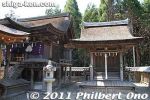
On the left is Nishi Honden hall, a National Treasure. On the right is Juzenji Shisha Honden shrine (十禅師神社本殿), an Important Cultural Property.
|
|

About Juzenji Shisha Honden shrine.
|
|
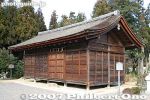
Portable shrine storehouse dating from the Muromachi Period, also an Important Cultural Property.
|
|

About the Portable shrine storehouse.
|
|
|
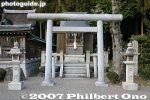
Affiliate shrine next to the Nishi Honden.
|
|
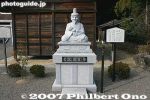
Babysitter sculpture 子守りの像
|
|
|
|
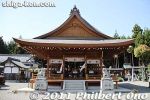
Haiden hall, reconstructed anew.
|
|
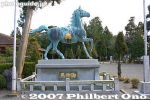
Sacred horse statue
|
|
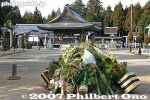
Namura Shrine and Sagicho pile to be burned. Ryuo-cho, Shiga.
|
|
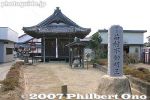
Fudo-myoo Shrine, an affiliate shrine.
|
|
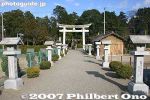
Path back to the torii. Across the street beyond the torii is Namura Shrine's east section where the Higashi Honden Hall is located.
|
|
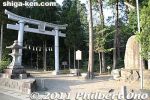
Across the street from Namura Shrine is the Higashi Honden torii. 苗村神社東本殿
|
|
|
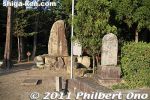
Stone monuments marking the Namura Shrine's east section.
|
|
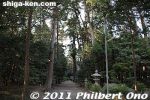
Short, wooded path to the Higashi Honden shrine.
|
|
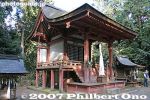
Namura Shrine's Higashi Honden, an Important Cultural Property in Ryuo, Shiga. Dedicated to a major god called Ōkuninushi (大国主) and Susano-o (素盞嗚尊). 苗村神社東本殿
|
|
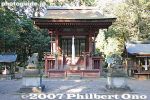
Namura Shrine's Higashi Honden, an Important Cultural Property 苗村神社東本殿
|
|
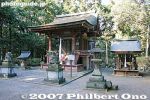
Higashi Honden 苗村神社東本殿
|
|
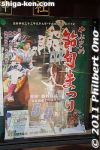
Poster for Namura Shrine's Sekku Matsuri Festival held on May 5. May 5 is Children's Day and the festival prays for their healthy growth along with a good harvest.
|
|
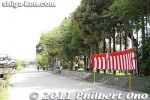
Namura Shrine's Sekku Festival's highlight is the yabusame horseback archery. There's a path in front of the Romon Gate for horses. They had two archery targets set up along the path.
|
|
|
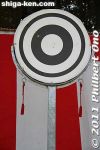
Yabusame horseback archery target.
|
|
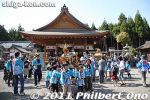
The festival started in the afternoon with children carrying mikoshi portable shrines.
|
|
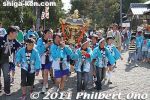
They carried the mikoshi around the Haiden Hall, then went around the neighborhood.
|
|
|
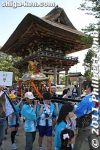
Children bearing mikoshi in front of Romon Gate.
|
|
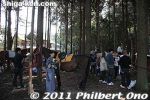
Meanwhile, a bunch of horses standby in the trees.
|
|
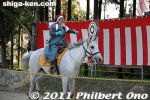
The yabusame (horseback archery) part of the festival finally started at around 4 pm. There were several horseback riders, but only this woman was going to shoot arrows.
|
|
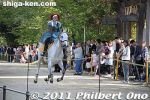
She did a few practice runs first.
|
|
|
|
|
|
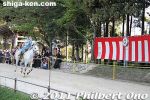
She missed the target the first two times.
|
|
|
|
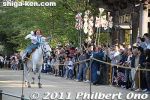
It seemed to be a provincial festival with few tourists. It wasn't so crowded and most people were local people.
|
|
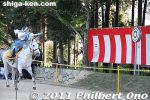
She shoots the arrow...
|
|
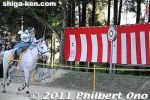
This one hit the target.
|
|
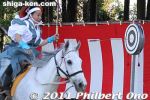
Bull's eye. Compared to other yabusame that I've seen, she rode the horse pretty slow.
|
|
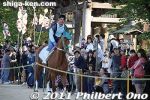
After the archer's successful run, the other riders just trotted past a few times without shooting any arrows.
|
|
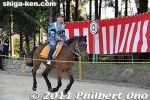
At least two riders took a spill and fell from the horse. No injuries though, and I filmed one of the riders who fell. See my video below.
|
|
|
|
|
|
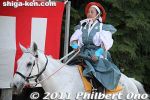
Horseback archer.
|
|
|
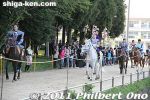
They had seven horses.
|
|
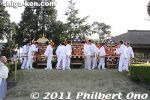
After the yabusame, they carried the mikoshi back.
|
|
|
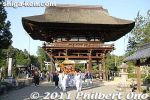
One mikoshi was taken to the Higashi Honden across the street.
|
|
|
|
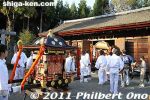
Two of the mikoshi are put back into the storehouse.
|
|
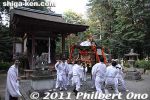
This mikoshi went to Higashi Honden.
|
|
|
|
|
|

My video of Namura Shrine's Sekku Matsuri festival
|
|

Suginoki Jinja Shrine. A short walk from Yamanoue 山之上 bus stop from JR Omi-Hachiman Station. 杉之木神社 MAP
|
|

The main path to Suginoki Shrine in Ryuo where the Kenketo and naginata procession will come through. The Kenketo Matsuri festival is held annually on May 3. It features the naginata dance and more.
|
|

Stone monument commemorating Suginoki Shrine as the birthplace as the Naginata Matsuri festival. 薙刀踊り発祥の宮(石碑) 杉之木神社
|
|

Grounds of Suginoki Shrine and main venue for the Kenketo Festival in Ryuo.
|
|

Suginoki Shrine
|
|

Suginoki Shrine Honden Hall
|
|

Suginoki Shrine Honden Hall
|
|

Another path to the shrine decorated with paper lanterns.
|
|

On the day of the festival on May 3, the Kenketo and naginata dance are held at multiple shrines in the area including neighboring Higashi-Omi. This is Higashi Hiyoshi Shrine (short walk from Suginoki) where a kenketo procession was to arrive and dance.
|
|

The procession arrived Higashi Hiyoshi Shrine at about 2:15 pm.
|
|
|
|
|
|
|
|
|

This kenketo-naginata dance has been inscribed as a UNESCO Intangible Cultural Heritage in 2022 as one of Japan's furyu-odori (風流踊) ritual dances.
|
|
|
|
|

Back at Suginoki Shrine.
|
|
|
|
|
|
|
|
|
|
|
|
|
|
|
|
|
|
|
|
|
|
|
|
|
|
|
|
|
|
|

The boys had these small bells on their back.
|
|
|
|
|
|
|
|
|
|
|
|
|
|
|
|
|
|
|
|
|
|
|
|
|
|
|
|
|
|

Naginata dance 長刀仕舞振り(長刀芸)
|
|

Naginata Odori in Ryuo. 長刀仕舞振り(長刀芸)
|
|
|

Kenketo Matsuri poster
|
|

Entering Ryuo-cho town by bus, heading for Oguchi 小口
|
|

Get off at Oguchi which is near central Ryuo and Namura Shrine. 小口
|
|

Oguchi intersection. Turn left for Namura Shrine and Kawamori.
|
|

To central Ryuo-cho.
|
|

Ryuo Town Hall, Shiga 竜王町役場 MAP
|
|
|

Ryuo-cho Public Library
|
|
|
|

Fire department at Kawamori
|
|

Vote for Shiga's first woman governor (in July 2006).
|
|

Kawamori Castle
|
|

Kawamori Castle, Ryuo-cho, Shiga 川守城跡 MAP
|
|

Agri-Park Ryuo is a local farmer's market with a few shops and restaurants, a pond with swan boats, farm house museum, and petting zoo. アグリパーク竜王 MAP
|
|

At the entrance of Agri-Park Ryuo is a dragon statue. The dragon is a symbol of Ryuo which means Dragon King.
|
|

Agri-Park Ryuo is open 10 am - 5 pm, closed Mondays (open if a national holiday and closed Tue. instead).
|
|

Agri-Park Ryuo's farm house museum. Small admission of 200 yen charged. 田園資料館
|
|

Inside the museum is a replica of a thatched-roof farmhouse.
|
|

Inside a replica of a thatched-roof farmhouse.
|
|

Old farming tools
|
|

Outside is a small area for animals.
|
|

You can buy a bunch of carrots to feed the sheep. You have to go through the museum to get here. 動物ふれあい広場
|
|

Very fluffy wool.
|
|

Goats too. Putting golf range even. For more info call 0748-57-1311 (in Japanese).
|
|

Ryuo manhole, Shiga Pref.
|
|

Kobiyoshi Shrine in rural Ryuo holds the Yuge no Hi Matsuri fire festival on the evening of May 1. See small torches, tossing flares, lots of firecrackers, fireworks, two giant straw torches. 弓削の火祭り MAPFrom Omi-Hachiman Station No. 4 bus stop, board the bus for Okaya Minami and get off at Nishikawa Higashi-guchi bus stop. The ride is about 13 min. From the bus stop, the shrine is a 10-min. walk. You can also take a taxi from Omi-Hachiman Station. Taxi would be required on the way back to Omi-Hachiman since the buses will not be running after the festival is over.
|
|

I took the bus from Omi-Hachiman Station and walked to the shrine. It's hard to find the shrine if you don't know where it is. I went before dark to make it easier to find. Yuge Fire Festival in Ryuo.
|
|

Two giant torches made of straw were on display in front of the shrine.
|
|

There is definitely something religious about these torches.
|
|

Top of a giant torch.
|
|

A touch of modernity and anime at Yuge Fire Festival in Ryuo. Can you tell what this is?
|
|

Also this string hung up here?
|
|

Path to Kobiyoshi Shrine.
|
|

In front of the Haiden Hall were small torches.
|
|

Small torches in front of the Haiden.
|
|
|
|
|

Kobiyoshi Shrine's Honden main hall.
|
|

Getting darker.
|
|

Farm land next to the shrine. Notice the giant torches on the right.
|
|

Behind Kobiyoshi Shrine is the Hino River. Nice place to sit and have a bento dinner.
|
|

Torii and lantern-lined path to Kobiyoshi Shrine.
|
|

Torii of Kobiyoshi Shrine and giant torches in the distance, Ryuo, Shiga Prefecture.
|
|

Torii of Kobiyoshi Shrine and giant torches in the distance for Yuge Fire Festival.
|
|

Giant torches stand ready.
|
|
|

At 7:30 pm, the children's mikoshi and a large taiko drum left the shrine to parade around the neighborhood.
|
|

Children's mikoshi. This was on May 1, 2010 and it was an unusually chilly evening.
|
|
|
|